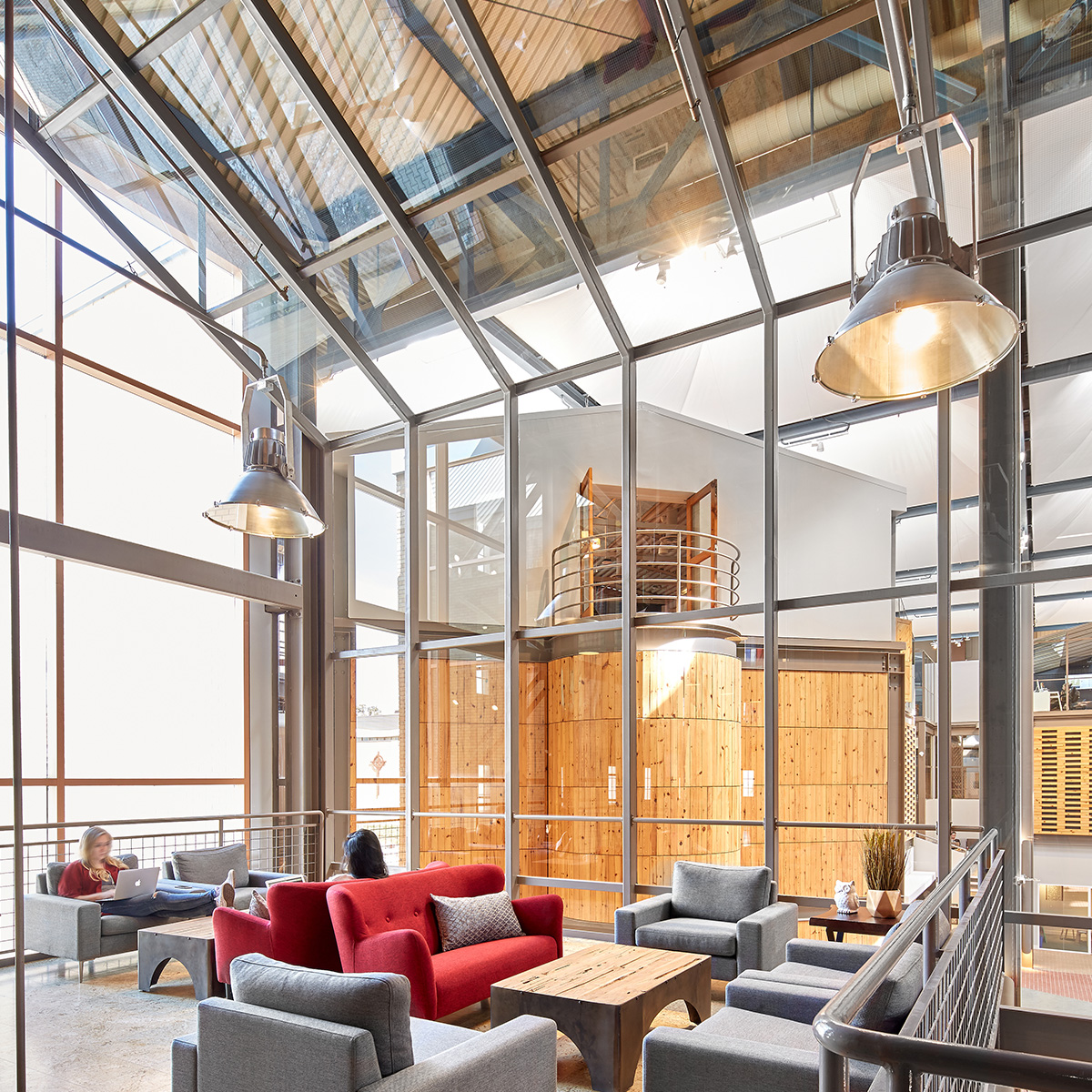You’ve probably heard of circadian rhythm, the natural sleep-wake cycle of the body, but have you heard of circadian lighting?
Light exposure plays an important role in human health, regulating our internal clocks and functions. Natural light signals when it’s time to rest or rise, it triggers hormone production, and it directly impacts our mental wellbeing. Circadian lighting is a method of illuminating a space or place in a way that respects and supports the body’s circadian rhythm.
We met with our in-house lighting specialist Dawn Brown to talk about this new technology and why it’s becoming an emerging trend. Here’s what we learned:
What is Circadian Lighting?
Like plants, humans need natural light to thrive; unlike plants, we typically work a 9-to-5 job inside a building. You probably wouldn’t keep a plant under a white fluorescent light all day, but you might also be sitting under one while reading this. Long-term exposure to a traditional electric light can confuse the body’s natural rhythms, especially its sleep-wake cycle — this is where circadian lighting comes in.
Circadian light is electric light mimicking the colour spectrum of natural light. Depending on the intensity at which this light is provided to the human body, it triggers a specific biological response. High intensity triggers a daytime response, activating the various hormones we need for daytime activities such as problem-solving, eating, and exercise. Low light intensity triggers a nighttime response, which activates the hormones we need for restful sleep, including those associated with memory building and physical restoration.
Naturally, Dawn is a major advocate: “Circadian lighting helps us become more aligned with nature by allowing us to establish and maintain a sleep-wake cycle that supports our personal needs.” It’s that natural element that stands out the most to those adopting the trend. Biophilic design is an industry concept valuing occupants’ connection to the natural environment, which many specialists believe to bring a wide variety of health, economic, and environmental benefits. “This is technology that adds back a component of nature that we’re currently missing in the built environment.”
Why it Matters
The main goal of circadian lighting is to help us achieve consistent, quality sleep. Sleep is the foundation of good health, impacting all aspects of life from your cognitive abilities to hormonal functions such as those controlling your appetite, as mentioned previously. It is also an essential factor in determining your daily energy, your personal satisfaction, and your ability to reach your goals.
As well as affecting our sleep, circadian light can improve our local atmosphere, and by extension, our mood. For example, Ontario’s long, dull winters don’t allow for the same quality of light throughout the year as you might get in a place like Florida. If you’ve ever experienced Seasonal Affective Disorder (SAD), circadian lighting could be part of the solution. By allowing us to control the intensity of our light as needed, circadian lighting can respond to the conditions that trigger SAD to help us regulate our mood year-round, wherever and whenever.
“Whether we’re factory workers, nurses, or teachers, we can use electric light to create the structured day/night cycle our body needs.” Being inside for so long every day, in offices and elementary schools alike, doesn’t allow our bodies much time to absorb natural daylight. Reintroducing natural light patterns through circadian lighting can significantly improve our alertness, focus, and efficiency during the day while allowing us to rest at night.
When to Design with Circadian Lighting
Circadian lighting is one important aspect in a multi-faceted plan to create healthier spaces. Dawn’s suggestion is to implement circadian light “in any space that will be occupied by the same person or people for more than three hours in a given day.” The lighting solution will be driven by the user, meaning anyone who will occupy a space, and how they’ll use that space.
You may wonder, “won’t windows do the trick?” While they certainly aren’t out of a job, if windows are primarily located in transitional spaces such as lobbies or corridors, the light they provide isn’t a major benefit to the space’s users. Even with many windows, circadian lighting can still prove highly impactful in those spaces they can’t quite reach. The full process runs much deeper: “A windowed space with an eastern exposure will receive the morning light, which is excellent. However, if your occupants don’t arrive until the late afternoon, or if they close the blinds due to glare, circadian lighting can still meet that need.” A thorough understanding of both users and how spaces are used will help answer whether or not circadian lighting can enhance their experience.
Overall, the benefits circadian light can offer to our long-term health, productivity, and success are worthy of recent interest. If you are interested in exploring circadian lighting in your next project, Dawn would be happy to share her knowledge with you.

